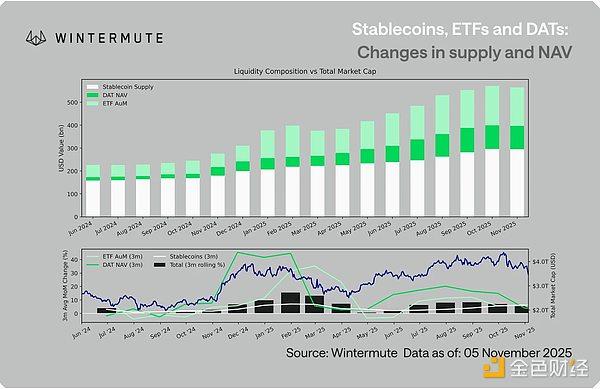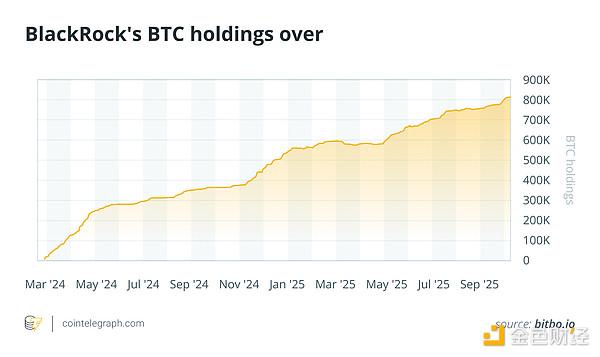Foreword
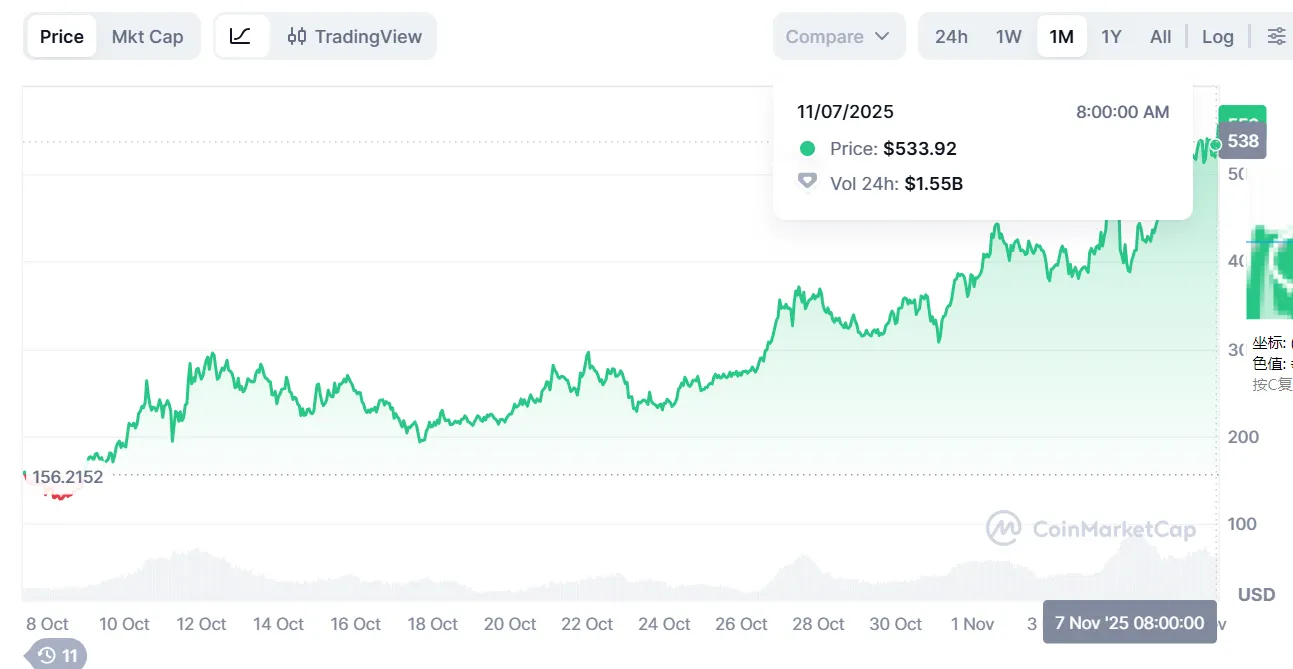
According to CoinMarketCap real-time data, Zcash surged from $156.21 to $533.92 between October 8th and November 7th, 2025, a 30-day increase of 241% (3.41 times), and a 67% rise from its previous high of $319 in May 2021, successfully achieving a technical breakthrough. However, it is worth noting that compared to its all-time peak of $4293 in 2016, the current price is still down 88%, indicating that ZEC is still far from truly returning to its peak.
In-depth analysis of driving factors
1. The Prince Group incident (core catalyst)
On October 14, 2025, the U.S. Department of Justice seized 127,271 BTC (worth $15 billion) from Chen Zhi, founder of Cambodia's Prince Group. This event demonstrated a fatal flaw in Bitcoin's transparent ledger at the sovereign level—governments can easily track, freeze, and confiscate on-chain assets. High-net-worth individuals have a strong demand for privacy protection, and the narrative that "Zcash is insurance against Bitcoin" has gained empirical support. The privacy coin sector saw a collective surge: ZEC rose 217%, XMR rose 9.1%, and DASH rose 12.5%.
2. Crypto narratives are drying up (market seeks new hot topics)
The current crypto market is experiencing a narrative vacuum: meme coins are causing aesthetic fatigue, new public chains lack innovation, and DeFi lacks new narratives. The market urgently needs new concepts to maintain momentum and liquidity. The return of the "privacy narrative" is timely—supported by real-world examples of government BTC seizures, endorsed by KOL like Naval, and able to capitalize on nostalgia for the "return of old mining coins to their former value." ZEC, as one of the leaders in the privacy sector, has become a target for speculative investment. This is a typical example of "theme rotation": when mainstream concepts have run out of hype, funds will dig into niche sectors to create new hot topics.
3. Celebrities like Hayes shill(igniting FOMO)
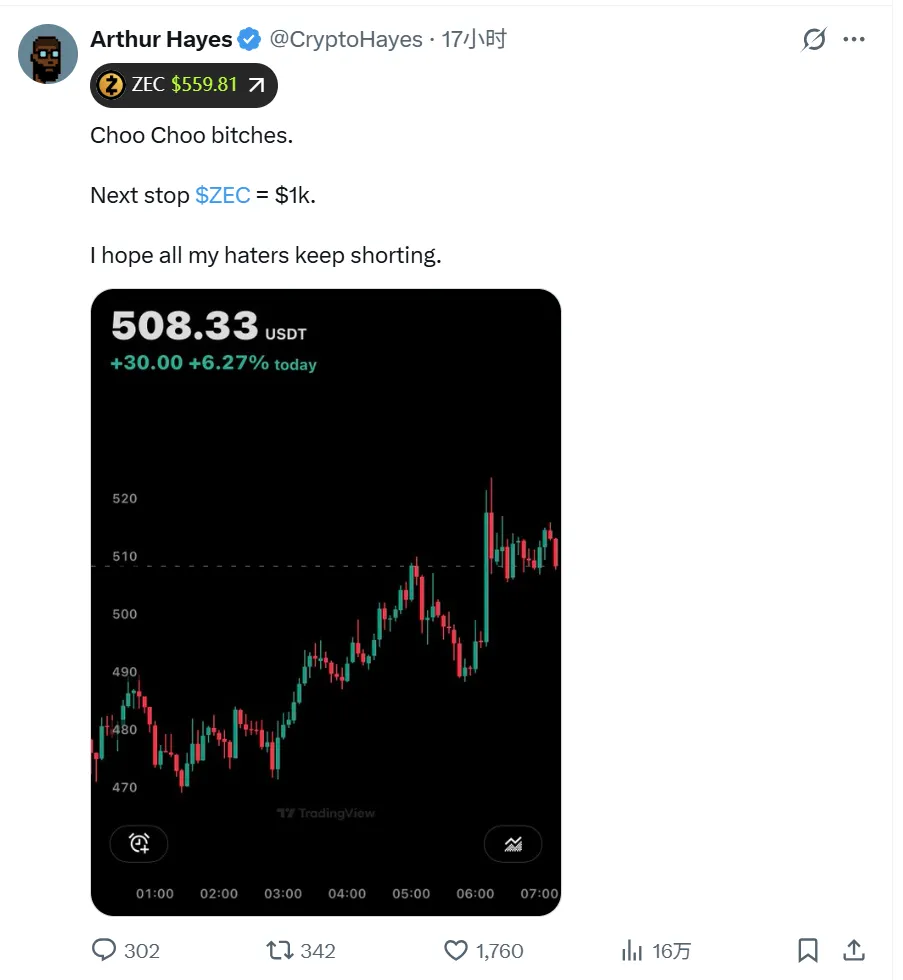
Silicon Valley investor Naval endorsed ZEC (which was then $68) on October 1st, stating that "Zcash is insurance against Bitcoin," and the price surged to $150 within a week. BitMEX founder Hayes has recently been frequently shill ZEC, igniting FOMO (Fear of Missing Out) among retail investors. Crypto KOL Ansem placed ZEC on par with BTC. This dense network of endorsements from top KOLs created a FOMO market atmosphere, but also sowed the seeds for potential "shill and dump" schemes.
4. Liquidity depletion makes a stock susceptible to manipulation (technical amplification).

ZEC has long been a "single-player coin"—with extremely low daily trading volume, zero attention, and its price hovering between $20 and $50 for years. In this extremely niche state, even a small amount of capital can drive a price surge. Highly concentrated holdings combined with a very shallow order book lead to uncontrollable price increases when buying pressure floods in. This is a classic example of the "low liquidity amplification effect," but it also means that a sell-off will result in a similarly sharp drop—there simply aren't enough buyers to absorb the selling pressure.
Fundamental Verification and Risk Warning

This surge is more driven by speculation than by fundamental growth. The key reason is the limited increase in the number of blocked transactions. Despite a nearly tenfold increase in prices, the utilization rate of the blocking pool has not improved. If there were a genuine surge in privacy demand, the proportion of the blocking pool should have skyrocketed, but actual data shows almost no change.
- The "alternative value" of privacy coins: an anonymous exchange tool
Crypto KOL CryptoMaid succinctly put it: "For over a decade, the main function of these privacy coins has been to allow people who want to anonymously sell Bitcoin to first exchange for these privacy coins, and then slowly unload them on third- or fourth-tier exchanges. Every bull market sees this process repeated." This reveals the true positioning of privacy coins: a tool for anonymously exchanging BTC, not a store of value. Combined with the recent BTC decline, ZEC's rise may be accompanied by BTC selling pressure. Once BTC stabilizes or rebounds, ZEC's "exchange demand" disappears, and its price will quickly fall back. This explains why privacy coins surge in every bull market but never maintain long-term highs—their core value lies in "transfer" rather than "holding."
- Technological progress cannot mask the adoption dilemma.
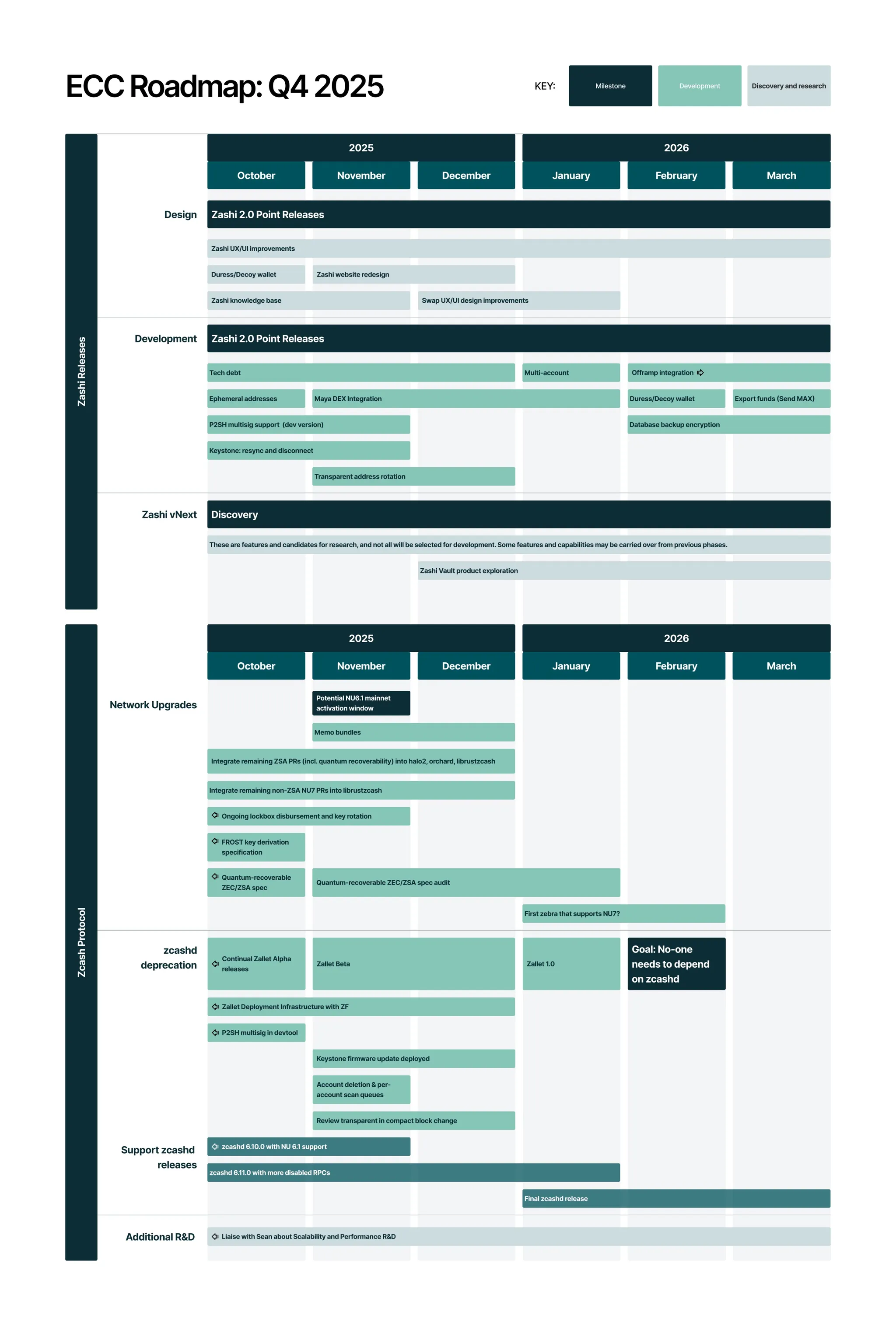
The Orchard protocol upgrade and the ECC Q4 2025 roadmap do indeed indicate that ZEC is not an empty project. However, the key issue is that the technological upgrade has not translated into increased trading activity; 70% of trades remain transparent. Technological leadership in zk-SNARKs does not equal market adoption. ZEC's challenge is not technological capability, but achieving genuine user growth under regulatory pressure.
Final conclusion
The technical picture has reached an extremely dangerous level: the price surged from $50 to $550, a tenfold increase in 40 days, exhibiting a typical parabolic surge. Trading volume shrank as it reached new highs, creating a textbook example of price-volume divergence. Historically, this technical pattern in cryptocurrencies has led to a violent 30-50% pullback in 90% of cases.
The fundamentals completely fail to support the current valuation: On-chain data provides irrefutable evidence: the shielded ZEC pool is 4.98M, accounting for 30.4%, a negligible change from before the price surge. Despite a 232% price increase, the shielded pool usage has seen zero growth, proving BuyUCoin CEO's assessment that "it's more driven by speculation than fundamental growth." Furthermore, 70% of ZEC transactions remain transparent, fundamentally contradicting the "privacy coin" positioning.
The driving factors are unsustainable: the Prince Group incident was a one-off catalyst and will not continue to occur; the theme rotation caused by the depletion of the crypto narrative is essentially short-term speculation; KOL shill trading carries the risk of "selling off shill"; the double-edged sword of liquidity depletion means that rapid rises can also lead to rapid falls.
Regulatory risk hangs like a sword of Damocles : the question facing privacy coins is not "whether they will be regulated" but "when they will be regulated." The US and EU are increasingly stringent in their stance on privacy coins, with Monero and Dash already delisted in multiple regions. If Coinbase announces the delisting of ZEC, its price could plummet by more than 70% in a single day, plunging investors into financial ruin.
A warning sign of doomsday chariots : Privacy coin surges are often a harbinger of a bear market.
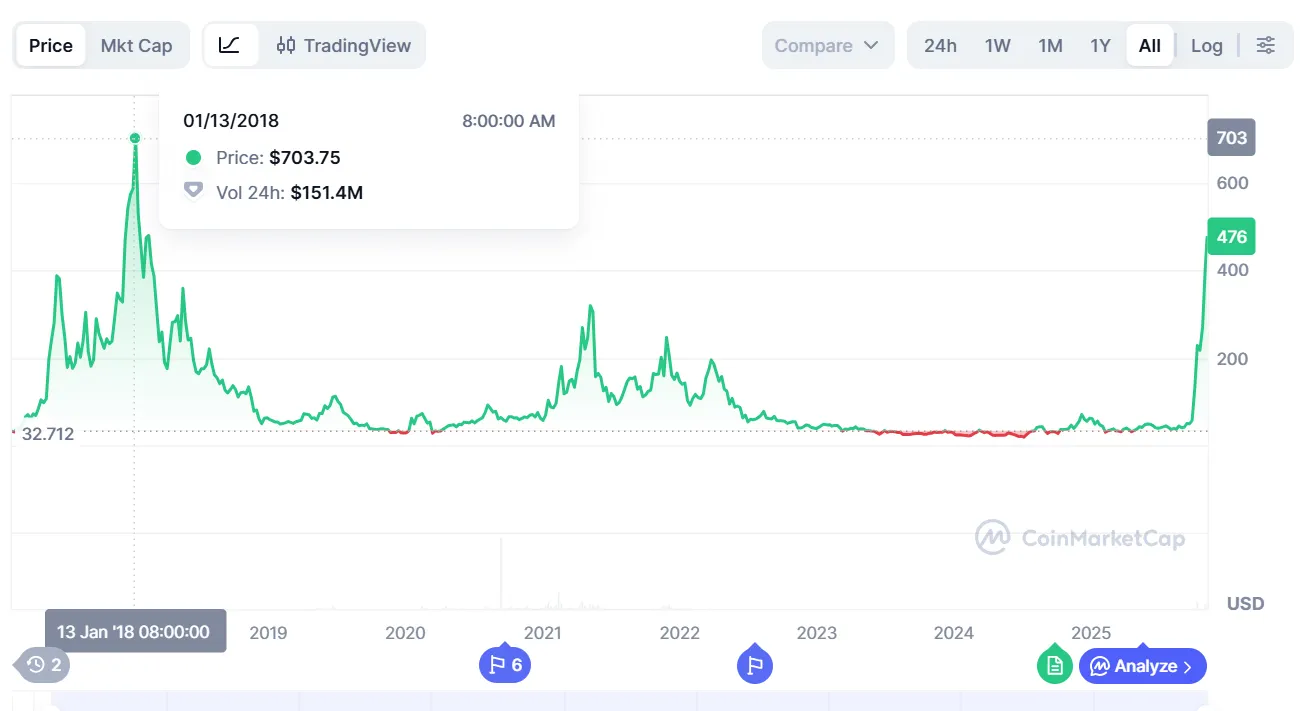
Historical data shows that ZEC surged 14 times from $50 to $703.75 in January 2018 before plummeting 93%, and again surged 6.8 times from $57 to $386 in May 2021 before crashing 92%. After both ZEC peaks, Bitcoin entered a deep bear market lasting 1-2 years: BTC fell from $20K to $3K in 2018 (-85%), and from $69K to $15K in 2021 (-78%). Privacy coins are often called "doomsday chariots" because their surges often represent the final frenzy after market liquidity dries up, a leading indicator of the entire crypto market entering a systemic bear market. When even long-dormant privacy coins are being hyped, it means the market has run out of things to speculate on, and funds have already dug into the most marginal and unpopular assets—a typical characteristic of the "garbage time" at the end of a bull market.
Conclusion
The market often interprets a surge in a particular sector as "value discovery" or "the rise of a new industry," but ZEC's situation may be the opposite—it's a contrarian indicator. A true industry rise should be accompanied by user growth, application deployment, and capital inflows, but the surge in privacy coins exhibits entirely different characteristics: it occurred at a time of extreme market liquidity, representing the last struggle of speculative capital after the hype surrounding mainstream assets has been exhausted. This is similar to the end of the dot-com bubble in 2000, when even websites selling pet supplies saw IPOs and soaring prices, not because pet e-commerce had potential, but because there was nowhere else for the money to go. The structural flaws of privacy coins dictate that they can only engage in a game of musical chairs among existing funds; therefore, its surge is essentially a result of liquidity depletion rather than value reassessment, a symptom of a market cycle turning point rather than the beginning of a new cycle.






